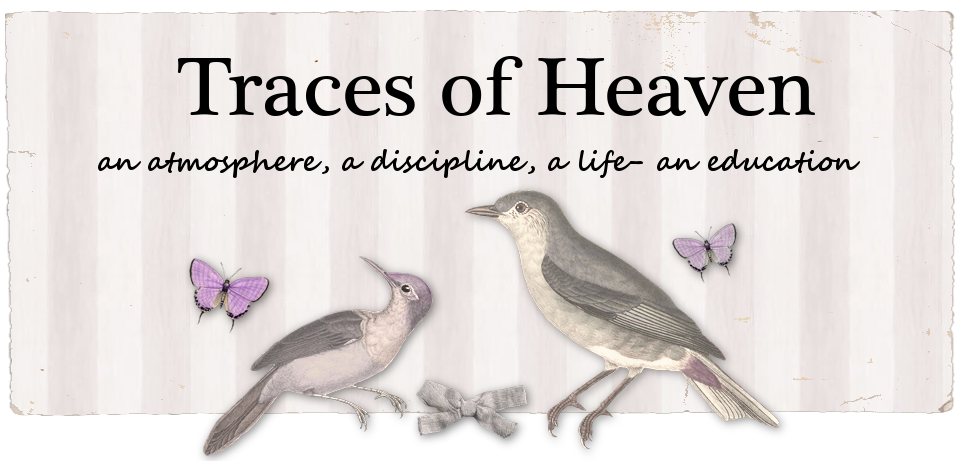There is a wonderful PNEU article about how to set up a book of centuries which I fully intend to use with a simple composition book once my children are older. I have often had to fight the urge to scrap this one and make one of those, but I'm going to wait a few years.
Since they are young right now, we are using a family Book of Centuries, which is primarily my responsibility to fill in because I'm super type-A and like things to be pretty and orderly... and if my children had charge of it I can only imagine the number of hobbits and butterflies and things I'd find drawn in the margins, which would drive me nuts. Charlotte wanted the child to make the book of centuries HIS OWN, and I assure you that when my kids are old enough, they will. But for now, in the young stages, I keep this family version, and they have their own composition books we call books of centuries but which are actually just books in which they record their narrations or narration maps for every history book they read.
This one stays out and on the table as long as it's a school day, and sometimes even when it's not. On Thursdays (our history day) at tea-time I take it out and we drink tea and eat cookies and go through it, talking about things they like.
As of now, there is not much filled in because we have only covered creation and early civilization alone in a formal way. But I've been asked how I do it, so here are some pictures and an explanation of our own book.
I used a three ring binder with a pattern that spoke to me about history (kinda greek), and printed out the free book of centuries template from Simply Charlotte Mason, not using facing pages and not printing on both sides of the sheets.
I made a nice cover for it and ghetto-laminated it using packing tape (my specialty!), and instead of dividers I use a printed page in papyrus font (my go-to history font!) in sheet protectors for separating the four eras that correspond with the four volumes/years of the Connecting With History Program that we use for studying world history as a family. We make an entry for each of our lessons if appropriate, and it takes less than five minutes to do each time, if that.
On the inside cover, I pasted a key to the codes we use on each main century overview page.:
These include things like wars and conflicts, massacres, rise and fall of a nation, important events in church history, etc.
There are two main sections. One is World Chronology and the other is Geography.
I placed a world map (modern) at the very front for quick access, and then began placing dividers and centuries for each volume of Connecting with History, century by century.
World Chronology has three pages per century, plus some additional pages in the front.
The additional pages start with the story of before the world began. I made these, although one of the pages contains an idea I snatched up about the beginning of time from my favorite Fisher Academy blog.
Then the centuries really begin. There are three pages per century. The first is a grid with 100 squares representing years in each century. We use the codes from above to mark up the overview grid so that we can see it in a kind of at-a-glance way. (bear in mind that ours are not very full yet because we haven't even reached Christ's birth in our family study.)
That's it! Let me know if you have questions, and I hope it helps someone.
And if perchance you find this post to be discouraging rather than helpful, you might enjoy this.














Hi I just came across your book from Pinterest and wanted to know where you got the grid of 100 squares from. I saw it in the SCM Book of Centuries but wanted to make my own or find a template already made. Thanks
ReplyDeleteLisa
Hi Lisa! I just made my own, but I have seen some on pinterest! I'd search there.
ReplyDelete